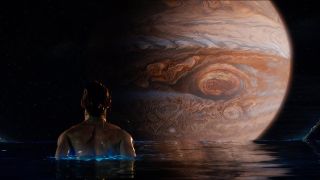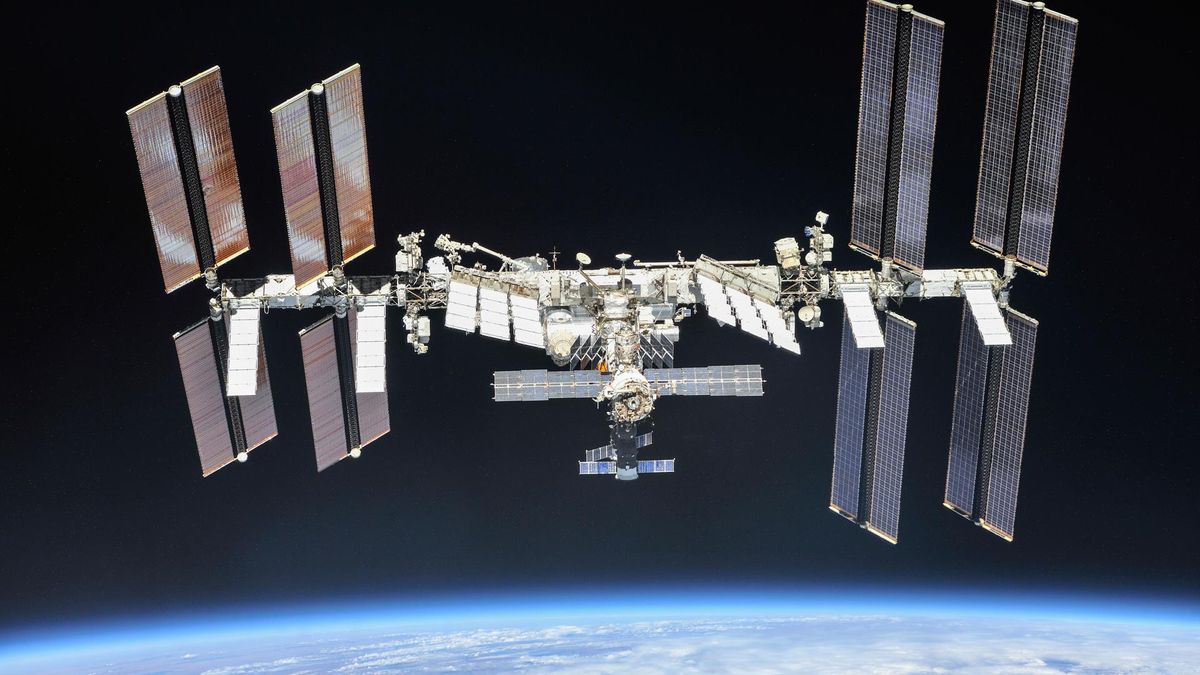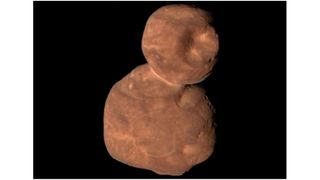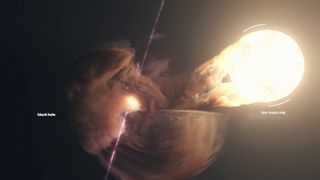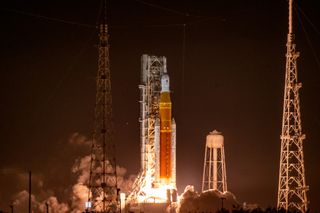Blue Origin is targeting next Tuesday (Feb. 25) for its 10th space tourism mission, which will send six people to the final frontier. If all goes according to plan, Blue Origin‘s suborbital New Shepard vehicle will lift off from the company’s West Texas site on Tuesday at 11:30 a.m. EST (1630 GMT; 9:30 a.m. local Texas time). You’ll be able to watch the action live, beginning 35 minutes before launch. Five of the six crewmembers who will fly on Blue Origin’s NS-30 suborbital mission. The sixth passenger has not yet…
Read MoreCategory: The Moon
Our moon
‘Jupiter Ascending’ came out 10 years ago, and we’re still not sure how The Matrix creators’ space opera went so wrong
Whenever someone brings up Lana and Lilly Wachowski’s body of work, The Matrix is always at the center of the conversation. Maybe Speed Racer and Cloud Atlas get some mentions thanks to their vocal followers, but their spacefaring epic Jupiter Ascending is typically swept under the rug. A critical and financial disaster, most people wouldn’t blame you for forgetting about it. And that’s a shame because we believe there are enough reasons after 10 years to give it a rewatch with new eyes. Sometimes, it’s great to step away from…
Read MoreSome baby stars in ancient stellar nurseries were born in ‘fluffy’ cosmic blankets
When it comes to baby blankets, the fluffier, the better — and astronomers have discovered that some infant stars in the early universe also preferred “fluffy” pre-natal cocoons. Stars are born in “stellar nurseries,” or regions of galaxies with an abundance of gas and dust that can become overly dense and collapse to form infant stars, or “protostars.” More accurately referred to as “molecular clouds,” these gaseous conglomerations can stretch for hundreds of light-years, thus forming thousands of stars. Scientists have learned a great deal about star formation in the…
Read MoreThe ISS should be deorbited ‘as soon as possible,’ Elon Musk says: ‘Let’s go to Mars’
Elon Musk thinks we should start moving on from the International Space Station (ISS). “It is time to begin preparations for deorbiting the @Space_Station. It has served its purpose. There is very little incremental utility. Let’s go to Mars,” the SpaceX chief and close Trump adviser said via X today (Feb. 20). In another X post, he laid out his preferred timeline: “The decision is up to the President, but my recommendation is as soon as possible. I recommend 2 years from now.” NASA and its partners on the ISS…
Read MoreLeaving Pluto in the dust: New Horizons probe gearing up for epic crossing of ‘termination shock’
NASA’s New Horizons spacecraft conducted the first and only flyby of the Pluto system, culminating at the closest approach of that distant world in July 2015. Sailing onward, the probe carried out a Jan. 1, 2019 flyby of Arrokoth, a Kuiper Belt Object, or KBO, located in a region of space beyond Neptune called the Kuiper Belt. There are scads of other icy worlds residing in the Kuiper Belt, celestial leftovers from the formation of our solar system. For New Horizons, the gathering of more exploration science is, pun intended,…
Read MoreBlack holes snacking on small stars create particle accelerators that bombard Earth with cosmic rays
Using 16 years of data from NASA’s gamma-ray detecting Fermi spacecraft, astronomers have discovered that “microquasars,” systems in which a black hole is slowly devouring a star, may be small, but they pack one heck of a punch. Despite their diminutive nature, this research suggests even microquasars snacking on small stars can have an impressive cosmic influence, becoming powerful natural particle accelerators. This means black holes indulging in stellar meals of all sizes could be responsible for a higher-than-suspected amount of high-energy charged particles called “cosmic rays,” which are constantly…
Read MoreLego Marvel Logo & Minifigures set review
Essential info: Price: $99.99/£89.99 Model number: 76313 Number of pieces: 931 Dimensions: 4 x 11 x 2.5 inches (11 x 28 x 7cm) Recommend age: 12+ I don’t think any other Lego set has been quite as ‘what you see is what you get’ as the Marvel Logo & Minifigures set. As the name suggests, this literally is a 3D box with the Marvel logo on the front. It’s not exactly inspiring. But it is a solid model, and with some interesting building techniques, it’s fairly fun to build too.…
Read MoreBoeing plans to lay off hundreds of employees working on NASA’s SLS moon rocket: reports
Boeing is preparing to issue layoff notices to roughly 200 employees working on the Space Launch System (SLS) — the massive rocket central to NASA’s flagship Artemis program — as it braces for the possibility that its contracts with the space agency may not be renewed after they end in March. Of the approximately 400 positions Boeing initially considered cutting by April “to align with revisions to the Artemis program and cost expectations,” the company managed to preserve half of the jobs after daily talks with NASA, Boeing’s Vice President…
Read More‘Captain America: Brave New World’ introduces adamantium into the MCU, but did it come from space in the comics?
The fourth Captain America movie, Captain America: Brave New World, is finally out and has been met with middling critical reviews. Despite that, fans are already dissecting every new character and plot development that’s transpired as they eagerly await The Fantastic Four: First Steps and Thunderbolts. Most intriguing is the introduction of adamantium in this movie, which is fascinating because of how it differs from the comic book lore. Adamantium is part of the comic book-y, ‘fun first’ science found in the long-running universe. From vibranium to recurring alien threats,…
Read MoreJapan’s Resilience moon lander aces lunar flyby ahead of historic touchdown try (photo)
The private Resilience lunar lander just got its first up-close look at the moon. Resilience, which was built by Japanese company ispace, aced a flyby of the moon on Friday evening (Feb. 14), coming within a mere 5,220 miles (8,400 kilometers) of Earth’s nearest neighbor. The lander memorialized the milestone with a photo, snapping a nice shot of the battered lunar surface from a distance of 8,972 miles (14,439 km). The close encounter was “a historic first of its type for a Japanese private, commercial lunar lander,” according to ispace.…
Read More
